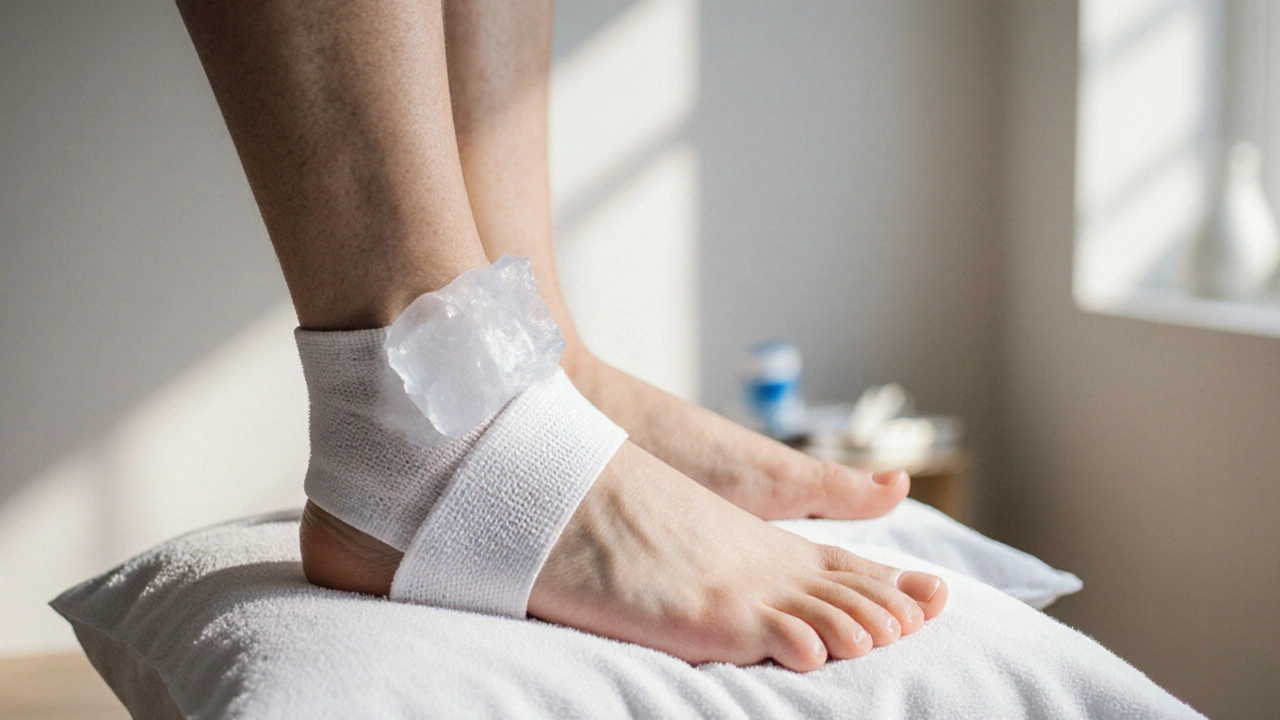Swelling After Injury: What Happens and How to Manage It
Did you ever get a swollen ankle after a night on the dance floor and wonder why it bursts up so fast? When you notice swelling after injury, the build‑up of fluid in tissues that follows trauma. Also known as post‑traumatic edema, it signals the body’s natural alarm system.
Inflammation, a protective immune reaction that brings blood, cells and chemicals to the damaged spot is the engine behind most swelling. In simple terms, the body opens the floodgates to clean up broken fibers and start repair. This surge creates the classic warmth, redness and throbbing you feel. Edema, the excess fluid that pools in the interstitial spaces is the visible puffiness that follows the inflammatory wave.
Understanding the Body’s Reaction
Swelling after injury encompasses inflammation, and the two are inseparable. Your circulatory system pushes plasma out of blood vessels, while tiny capillaries become leaky. The result: fluid fills the tissue, stretching skin and nerves, which creates that tight, uncomfortable feeling. If you’ve ever pressed on a bruised knee and felt a soft, squishy give, you’ve felt edema in action. The good news? This process is reversible, and you can speed it up.
Effective management requires a clear plan. The gold‑standard approach is the RICE protocol, Rest, Ice, Compression and Elevation. Each element tackles a different part of the swelling cascade. Rest limits further damage, ice narrows blood vessels, compression squeezes out excess fluid, and elevation uses gravity to drain the area. Together they form a simple, low‑cost toolbox that most people can apply at home.
Another powerful tool is medication. NSAIDs, non‑steroidal anti‑inflammatory drugs that block prostaglandin production reduce both pain and the inflammatory response. Over‑the‑counter options like ibuprofen or naproxen can shrink swelling within a few hours, especially when paired with RICE. Just remember to follow dosage guidelines and check with a doctor if you have ulcers or kidney issues.
Now, let’s break down how each RICE step works in practice. Rest means avoiding weight‑bearing or repetitive motions for the first 24‑48 hours. Ice should be applied for 15‑20 minutes, three to four times a day, using a thin towel to protect skin. Compression can be a snug elastic bandage—tight enough to feel support but not so tight that it cuts circulation. Elevation simply involves propping the injured limb above heart level, using pillows or an adjustable chair.
Timing matters too. Swelling peaks around 48 hours post‑injury, then gradually subsides. If you notice the puffiness spreading, getting hotter instead of cooler, or the pain worsening after a few days, it could signal infection or a deeper issue like a fracture. In those cases, professional evaluation is key.
Nutrition also plays a subtle role. Foods rich in omega‑3 fatty acids—think salmon, walnuts, flaxseed—have mild anti‑inflammatory properties. Staying hydrated helps your body manage fluid balance, which can prevent excessive edema. While these changes won’t replace RICE or NSAIDs, they add a supportive layer to the healing process.
For athletes or active folks, you might wonder when it’s safe to get back to training. A practical rule is the “pain‑free range‑of‑motion” test: if you can move the joint through its full motion without pain or noticeable swelling, you’re likely ready for light activity. Gradually increase intensity and keep the RICE steps in your routine for the first week back.
Sometimes swelling isn’t just a bruise. Chronic conditions like arthritis or venous insufficiency can cause persistent edema that flares after minor knocks. If you’ve had recurrent swelling for months, talk to a healthcare provider about underlying causes and long‑term management strategies.
So far we’ve covered the why and how of swelling after injury, from the inflammatory burst to practical steps like RICE and NSAIDs. Below you’ll find a curated set of articles that dive deeper into each component—whether you need a step‑by‑step ice‑application guide, a comparison of over‑the‑counter anti‑inflammatory meds, or tips on preventing future bruises. Explore the collection to arm yourself with the right knowledge for a faster, smoother recovery.
How to Reduce Swelling After an Injury and Speed Recovery

Learn fast, science‑backed ways to reduce swelling after an injury, from the RICE basics to nutrition tips, so you can recover quicker and get back to daily life.
- September 30 2025
- Tony Newman
- 9 Comments
